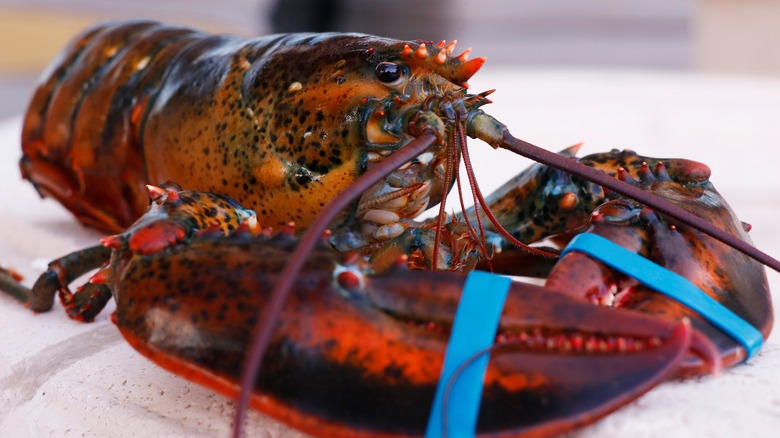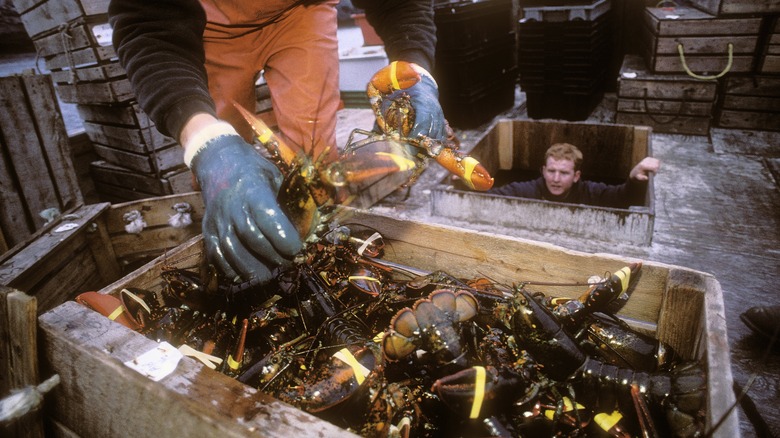How New 'Red List' Additions May Impact Your Lobster Consumption
In response to visitor requests for information about sourcing sustainable seafood, the Monterey Bay Aquarium established its Seafood Watch program in the late 1990s. Using the Seafood Watch website or app, consumers and restaurateurs can quickly look up a seafood species and learn about how its production affects the environment and the health of other animal species. Some seafood sources are labeled in green, indicating it's a good source, free of negative environmental effects. Others are marked in blue, indicating they're certified sustainable or in amber, which means some sources of the species are safe, while others may not be.
The "red list," however, indicates the species that Seafood Watch recommends avoiding due to their adverse environmental effects. According to environmental watchdog Oceana, this red list has been remarkably effective in shaping the choices made by individuals and large organizations like Whole Foods, Blue Apron, and ARAMARK, all of which have pledged to follow Seafood Watch recommendations in their purchasing decisions. This week, Seafood Watch added several new fisheries and species to their red list (per Cape and Islands). While the red list is a recommendation, not a legal prohibition of the use or purchase of seafood species, it will be interesting to see how the restaurant and grocery groups that have pledged to follow these standards will handle the new developments.
The American lobster is on the 'red list'
According to Oceana, Seafood Watch added the U.S. American lobster fishery to the red list because it poses a threat to the critically endangered population of the North Atlantic right whale, a species that currently numbers just 330, only about 80 of which are breeding females. The red list recommendation to avoid purchasing or consuming the American lobster explains, "Entanglement in fishing gear is the leading cause of serious injury and death to North Atlantic right whales," and says that while some efforts have been made to make the American lobster industry more environmentally sound, those efforts aren't sufficient to protect the dwindling population of the right whale.
The Guardian points out that the migratory path of the right whale encompasses more than a million vertical fishing lines used for pots and traps that capture crabs and lobsters. More than 600,000 of those lines are in U.S. waters. The addition of the American lobster to the red list is intended to pressure the governments of the U.S. and Canada and also the lobster fishery to adopt and enforce regulations that protect the right whale (per Oceana). Cape and Islands also notes that Jonah crab fisheries and other trap, pot, and gillnet fisheries were also added to the red list, along with the American lobster. In the meantime, consumers can opt for using the Caribbean spiny lobster if they have a lobster roll craving or perhaps choose a plant-based seafood alternative.

